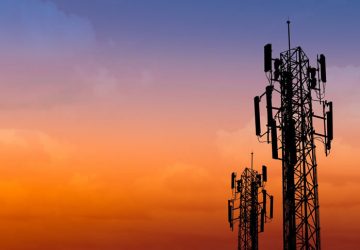Discover the Optimal Sites for 5G Towers: Your Guide to Perfect Placement!
The transition to 5G technology marks a monumental shift in the telecommunication industry, offering transformative increases in speed and connection strength that stand to redefine our societal landscape. The crux of effectively harnessing 5G, however, lies in the precise deployment of its infrastructure. 5G towers demand an intricate balance between technical needs and community integration. For all parties involved, from the giants in telecom to city planners, understanding the complex criteria for the ideal placement of these towers is key to successfully navigating the waves of this technological advancement.

Scientific Site Selection Principles
The journey to deploying 5G requires an intimate knowledge of its operational framework. Unlike its predecessor, 5G operates on higher frequency bands known as millimeter waves. These frequencies deliver unprecedented data transfer rates and support a large number of users, but they suffer from limited range and physical penetration prowess. Obstacles like buildings or foliage can disrupt the signal, necessitating an unobstructed path for transmission. This necessitates the strategic positioning of 5G towers in elevated areas or within a densely packed grid to overcome these limitations and ensure consistent service availability.
Population Density Meets Network Capacity
5G technology not only seeks to provide ubiquitous coverage but also aims to manage the burgeoning data consumption needs. In densely populated regions or bustling commercial centers, the network is expected to shoulder heavy traffic loads. By assessing demographic pulses and data usage trends, providers are able to focus on high-usage zones such as shopping complexes, business districts, and entertainment venues, ensuring the infrastructure can accommodate the high demands placed on it.
Topographical Challenges in Tower Siting
The landscape plays a pivotal role in determining effective tower locations. Metropolitan areas may offer the convenience of pre-existing infrastructure, which can serve as hosts to the smaller 5G cells. Alternatively, more rugged or pastoral settings may pose difficulties with their variable contours and a scarcity of structures. To combat this, standalone structures may have to be erected on higher ground, or supplementary technologies like signal boosters might be required to guarantee full coverage.
Legal Frameworks and Regulatory Compliance
When it comes to installing 5G towers, success is not solely dictated by technological capability but also by legal stipulations. The intricacies of zoning laws, health standards, and a spectrum of other regulatory requirements ensure that the installment of 5G infrastructure conforms to all necessary guidelines. The process includes securing permits, satisfying city mandates, mitigating environmental effects, and engaging with the public's concerns. Navigating these steps with transparency can preclude setbacks such as legal objections or civilian resistance that could otherwise hinder progress.
Considering Environmental and Visual Impacts
The aesthetics and environmental impact of tower installations also carry weight. Large structures could mar landscapes, especially in locations with historical or natural importance. Employing creative solutions such as disguising towers or integrating them discreetly within the urban fabric can alleviate visual concerns. Engaging these considerations respects the local environment, currying favor with residents and strategically reducing opposition in the process.
Partnerships with Local Stakeholders
For 5G rollouts to be successful, collaboration is imperative. Engaging with local governance, businesses, and residents can pave the way for smoother deployments. Utilizing pre-existing structures such as street lights, public sector buildings, or utility poles for installing small cells is a cost-effective approach that minimizes disruption. These cooperative efforts can create mutually advantageous outcomes, establishing community support and facilitating implementation.
Harnessing the power of 5G extends beyond implementing new technology—it's a choreographed interplay involving strategy, adherence to regulations, and community relations. Pinpointing optimal sites for 5G towers is critical in maximizing the technology's benefits. This calls for a comprehensive mindset that recognizes scientific, legal, and social parameters. In this journey, the objective is as clear as it is compelling: integrating 5G into our cities and communities in a manner that is respectful, effective, and ultimately advantageous for all involved. The era of advanced connectivity has arrived, and its triumph is contingent upon a deliberate and considerate approach to its proliferation.
-
1

Ultimate Feast for the Eyes: Top Cooking Shows Every Foodie Must Watch!
-
2

Maximize the Lifespan of Your New Dental Implants with Expert Care Tips
-
3

Ascending with Ease: The Revolutionary Journey of Stair Lift Technology
-
4

Maximizing Your Walk-In Tub's Lifespan: The Ultimate Guide to Enhanced Performance and Durability
-
5

Unlock Bigger Savings: Master the Art of Using Your Gas Rebate Card!










